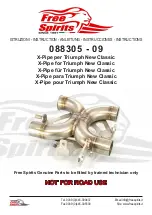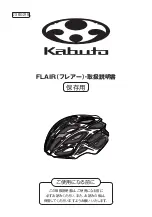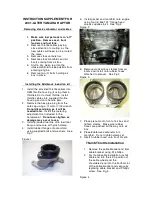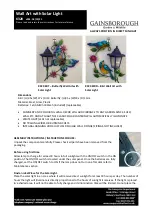
Air Lift 1000
PROBLEM
CAUSE
SOLUTION
System won’t maintain pressure
overnight.
Improperly installed air line, air line has
holes or cracks.
Leak test the air line connections, the threaded
connection into the air spring, and all fittings in
the control system.
Compressor runs all the time.
The compressor relay is defective or there
is a leak in the air lines.
Replace the relay or find the air leak.
Air spring or tank leak.
Fitting seal or air line is compromised.
Check to make sure air lines are seated in
connectors. Inspect fittings with soapy water.
Trim hose or re-seal fitting. Ensure lines are cut
straight.
Corner won't raise or air leak
develops.
Look for a kink or fold in the air line.
Replace any air line that has been kinked.
FREQUENTLY ASKED QUESTIONS
Q. Will installing air springs increase the weight ratings of a vehicle?
No. Adding air springs will not change the weight ratings (GAWR, GCWR and/
or GVWR) of a vehicle. Exceeding the GVWR is dangerous and voids the Air Lift
warranty.
Q. Is it necessary to keep air in the air springs at all times and how much pressure
will they need?
The recommended minimum air pressure for the Air Lift 1000 kit is 5 PSI.
Q. Is it necessary to add a compressor system to the air springs?
No. Air pressure can be adjusted with any type of compressor as long as it can
produce sufficient pressure to service the springs. Even a bicycle tire pump can be
used, but it’s a lot of work.
Q. How long should air springs last?
If the air springs are properly installed and maintained they can last indefinitely.
Q. Will raising the vehicle on a hoist for service work damage the air springs?
No. The vehicle can be lifted on a hoist for short-term service work such as tire
rotation or oil changes. However, if the vehicle will be on the hoist for a prolonged
period of time, support the axle with jack stands in order to take the tension off of the
air springs.
G. Troubleshooting Guide































